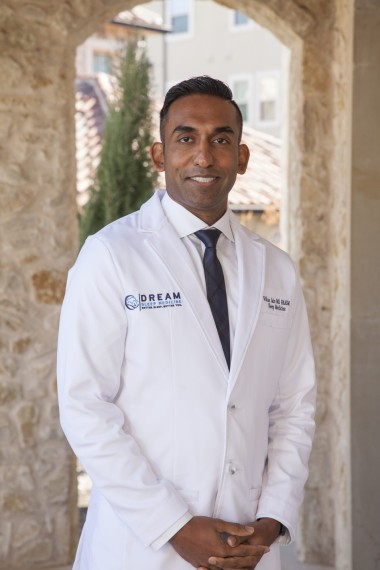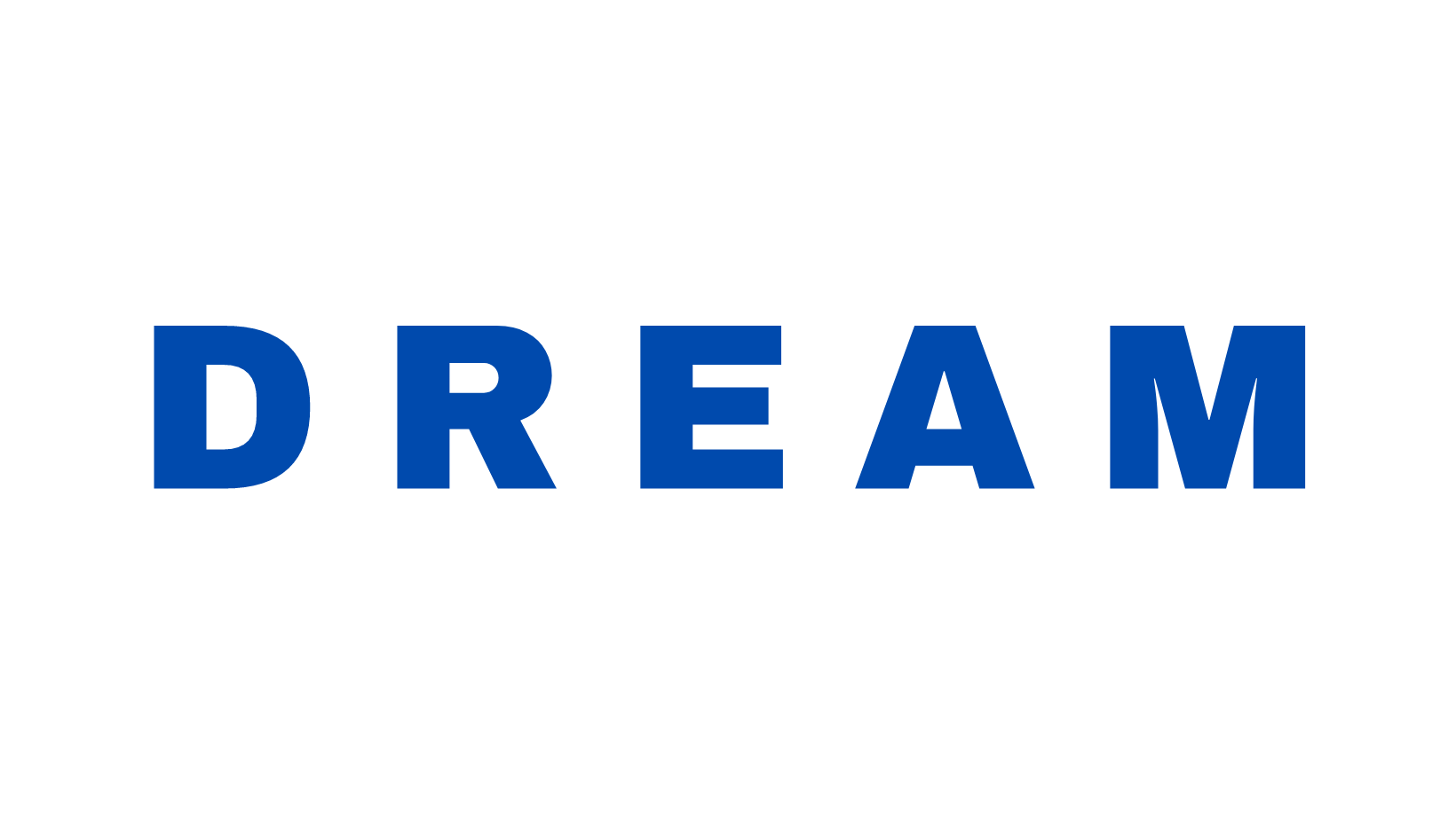Inspire Center of
Excellence
Say goodbye to cumbersome masks and enjoy a peaceful sleep with Inspire®
Therapy. Dream Sleep Medicine offers this innovative treatment that works inside
your body to treat sleep apnea. Explore the benefits, hear from satisfied patients,
and schedule a consultation with our experienced team for personalized care.
Get ready to wake up refreshed and revitalized!
Treat Sleep Apnea Without a Mask
Dream Sleep Medicine is proud to offer Inspire® Therapy, an innovative sleep apnea treatment option. Inspire can offer relief for those who struggle with or can’t find relief from CPAP.
Inspire works inside your body to treat sleep apnea. It’s a small device placed during a same-day, outpatient procedure.


Inspire Care Team Excellence Program
We’re honored to be the first clinic in Texas to be recognized as an Inspire Care Team of Excellence. The Inspire Excellence Program recognizes physicians and their teams who demonstrate their commitment to delivering an exceptional patient experience while achieving excellent clinical results. Together we have achieved the following:
1st in Collin County to implant Inspire patients
1st Private Practice offering Inspire
1st ASC implanting Inspire
1st to offer a Preceptorship Program for Sleep Medicine
1st to bring the Excellence Program to Texas
1st Physician of Excellence Awards in Texas
1st Care Team of Excellence in Texas: 1 of 10 in the USA
Our care team includes our trusted partners at the ENT & Allergy Centers of Texas (972-984-1050). We work closely together to ensure that our patients receive the best care when treating obstructive sleep apnea.
How Inspire Works
While you sleep, Inspire uses mild stimulation to open your airway, allowing you to breathe normally and sleep peacefully. When you’re ready for bed, simply click the remote to turn Inspire on. The system monitors your breathing patterns and senses when to deliver a gentle pulse to open your airway. When you wake up, use the remote to turn Inspire off.
What Inspire Users Say
I have dealt with insomnia issues my whole life...Dr. Jain saved my life! I can now go to sleep and wake up refreshed every morning. The best thing is that it's with no meds. Thank you so much for your help!!
Dr Jain was the first doctor I went to that actually took the time to speak to me about my sleep issues. He was very thorough and he explained every step of the process.
I was beyond impressed with my experience at Dr. Jain's office. Dr Jain is hands-down one of the best medical doctors i have seen.
Inspire Therapy Success Rate Calculator
Based on Published Clinical Literature
📊 Step 1: Your Sleep Study Results
What is your AHI (Apnea-Hypopnea Index)?
⚖️ Step 2: Your BMI (Body Mass Index)
Calculate your BMI or select your range:
👤 Step 3: Your Age
🫁 Step 4: Your Oxygen Levels During Sleep
(Check your sleep study for "oxygen nadir" or "lowest oxygen saturation")
😴 Step 5: CPAP Experience
Inspire Therapy Success Rates
Evidence-Based Analysis from Published Medical Research
Understanding Your Potential Outcomes
The success rate information below is compiled from our analysis of peer-reviewed medical journals, FDA clinical trial data, and published research studies on Inspire therapy. These represent statistical averages from study populations and may not reflect individual patient outcomes.
Clinical Success Rate Categories
Derived from Published Research Literature
🟢 Optimal Patient Profile
Success Range: 75-80% (Published Data Range: 70-85%)
Patient characteristics:
- Sleep apnea severity: AHI 15-35 events per hour (moderate range)
- BMI: 18-28 kg/m² (healthy to slightly overweight)
- Airway anatomy: Anterior-posterior collapse pattern only (Drug Induced Sleep Endoscopy Report - get this from your ENT)
- Age: 45-70 years
- Oxygen levels: Lowest oxygen during sleep ≥75%
Clinical interpretation: Research indicates approximately 4 out of 5 patients in this profile achieve significant improvement
Literature foundation: Optimized selection criteria studies and predictive analysis research
🟢 Standard Patient Profile
Success Range: 65-75% (Published Data Range: 60-80%)
Patient characteristics:
- Sleep apnea severity: AHI 15-65 events per hour (moderate to severe)
- BMI: 18-32 kg/m² (FDA standard range)
- Airway anatomy: No complete concentric collapse (Drug Induced Sleep Endoscopy Report - get this from your ENT)
- Age: 22+ years
- Medical status: CPAP intolerant, no major heart/lung disease
Clinical interpretation: Studies demonstrate roughly 7 out of 10 patients achieve significant improvement
Literature foundation: Primary STAR clinical trial data and longitudinal follow-up research
🟡 Expanded Criteria Patients
Success Range: 50-65% (Published Data Range: 45-70%)
Patient characteristics (one or both of these):
- Higher BMI: 32-40 kg/m² (newly FDA-approved range) WITH AHI 15-65
- Severe sleep apnea: AHI 65-100 events per hour (newly FDA-approved) WITH BMI ≤32
- Airway anatomy: Must still have favorable anatomy (no complete concentric collapse - Drug Induced Sleep Endoscopy Report)
- Other factors: Should be optimal (good oxygen levels, appropriate age)
Clinical interpretation: Research suggests approximately 6 out of 10 patients achieve significant improvement
Literature foundation: ADHERE registry analysis supporting recent FDA criteria expansion
🟡 Complex Cases
Success Range: 40-55% (Published Data Range: 35-60%)
Patient characteristics (combination of challenging factors):
- Higher BMI: 33-40 kg/m² AND Severe sleep apnea: AHI 65-100 events per hour
- Suboptimal anatomy: Some lateral wall involvement (but not complete concentric - Drug Induced Sleep Endoscopy Report)
- Lower oxygen levels: Oxygen nadir 65-75% during sleep
- Age extremes: Under 30 or over 75 years
Clinical interpretation: Available data indicates roughly half of patients achieve significant improvement
Literature foundation: Limited published outcomes data on high-complexity patient combinations
Quick Self-Assessment Tools
Find Your BMI (Use online BMI calculator with your height/weight)
- Underweight: BMI under 18.5
- Normal weight: BMI 18.5-24.9 (optimal for Inspire)
- Overweight: BMI 25-29.9 (very good for Inspire)
- Obese Class I: BMI 30-32 (good for Inspire - standard FDA range)
- Obese Class II: BMI 33-39.9 (moderate for Inspire - newly approved)
- Obese Class III: BMI 40+ (not currently FDA-approved for Inspire)
Find Your Sleep Apnea Severity (Check your sleep study report)
- Mild: AHI 5-14 events per hour (not eligible for Inspire)
- Moderate: AHI 15-29 events per hour (optimal for Inspire)
- Moderate-Severe: AHI 30-49 events per hour (good for Inspire)
- Severe: AHI 50-79 events per hour (challenging but eligible)
- Very Severe: AHI 80-100 events per hour (most challenging, newly approved)
Airway Anatomy Assessment (Requires Drug Induced Sleep Endoscopy - get this from your ENT)
- Favorable: Tongue-based or front-to-back soft palate collapse
- Unfavorable: Complete circular collapse at soft palate level (not eligible)
- Intermediate: Some side-wall involvement but not complete
Clinical Success Definition
Based on Standard Research Methodology
✅ Primary outcome: Reduction of sleep apnea events by ≥50% (Standard clinical trial endpoint)
✅ Secondary outcome: Final AHI <20 events per hour (Mild sleep apnea range)
✅ Quality measures: Improved sleep quality and reduced daytime symptoms (Patient-reported outcomes)
✅ Additional benefits: Decreased snoring intensity (Secondary clinical measure)
Individual Assessment Requirements
Population-based statistics cannot determine personal outcomes. Individual success probability requires comprehensive clinical evaluation encompassing:
- Complete sleep study analysis and interpretation
- Detailed anatomical assessment via Drug Induced Sleep Endoscopy
- Comprehensive medical history and comorbidity evaluation
- Sleep endoscopy findings and interpretation
- Additional patient-specific clinical factors
Personalized consultation provides individualized assessment comparing your specific clinical profile to published research populations.
⚠️ Essential Disclaimers
Outcome Variability: Published success rates represent population averages from clinical studies and cannot predict individual patient results. Personal outcomes may differ substantially from these statistical ranges.
Educational Content: All presented information derives from our interpretation of published medical research, FDA documentation, and clinical studies current as of publication date. This content serves educational purposes exclusively.
No Outcome Guarantees: No assurances or warranties regarding treatment results are provided. Success rates may vary due to individual patient characteristics, procedural factors, device performance, and variables not captured in published research.
Independent Analysis: This content represents independent review of published medical literature and maintains no affiliation with or endorsement from Inspire Medical Systems, Inc. or related manufacturers.
The above information represents our independent interpretation and analysis of published medical literature regarding Inspire therapy clinical outcomes. This content is provided exclusively for educational purposes and does not constitute medical advice, treatment recommendations, or individual outcome predictions. All clinical decisions should involve consultation with qualified healthcare professionals. Success rates derive from published clinical research and individual results may vary significantly. No guarantees regarding treatment outcomes are stated or implied. This information maintains independence from and no affiliation with device manufacturers. Medical literature and clinical recommendations continue evolving, and this information reflects currently available published data as of August 3, 2025.
Content Updated: August 3, 2025 | Literature Review Current Through: August 3, 2025


